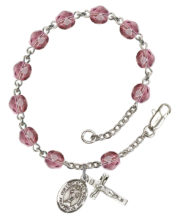Mary
Our Lady of All Nations
What is the devotion to Our Lady of All Nations
The devotion to Our Lady of All Nations, also known as the “Amsterdam Apparition” or “Miracle of the Sun” is a Marian devotion that centers around a series of apparitions of the Virgin Mary that are said to have occurred in Amsterdam, Netherlands in the 1940s and 1950s. The apparitions were said to have been witnessed by a Dutch woman named Ida Peerdeman, who reported that Mary appeared to her several times between 1945 and 1959 and gave her messages for the world.
According to Peerdeman, Mary appeared to her as “Lady of All Nations” and said that she was the mother of all people, and that she had come to offer a message of hope and peace to the world. Mary is also said to have given five “requests” or “promises” to Peerdeman, which included a call for the “union of Christians,” the conversion of Russia, and the spreading of devotion to her as “Lady of All Nations.”
The apparitions and messages of Our Lady of All Nations received widespread attention in the Catholic Church, with some people seeing them as a sign of the times and a call for renewed faith and devotion to Mary. However, the messages and Peerdeman’s claims were also met with skepticism and debate within the church.
In 2002, the Archbishop of Utrecht, Jan Pieter Schotte, authorized the official public worship of Our Lady of All Nations, basing it on the testimony of Ida Peerdeman. In the same year, the International Association of the Lady of All Nations was established in the Netherlands, which promotes the devotion and organizes various activities such as masses, pilgrimage and conferences, to spread the devotion worldwide.
The most important event in the devotion to Our Lady of All Nations is the feast of Lady of All Nations, celebrated on the last Sunday of April. During this feast, many believers make pilgrimage to the church where the apparitions are said to have occurred in Amsterdam, to pray and to honor Our Lady of All Nations.
According to the devotees, the apparitions of Our Lady of All Nations is seen as a call to unity and peace in a world that is plagued by war and division. They believe that Mary’s message is one of hope and that by following her requests and spreading devotion to her, the world can be transformed and become a better place.
One of the most significant features of the devotion is the request to all nations to “unite in the prayer of the Lady of All Nations for the conversion of Russia, the peace of the world and the union of Christians”. This has led to widespread devotion among Christians who see this as a way to contribute to the unity of the church and bring about peace in the world.
In summary, the devotion to Our Lady of All Nations is a Marian devotion that centers around a series of apparitions of the Virgin Mary that are said to have occurred in Amsterdam, Netherlands in the 1940s and 1950s. According to the devotees, the apparitions are a call to unity and peace in a world that is plagued by war and division. The feast of Lady of All Nations is celebrated on the last Sunday of April, where many believers make pilgrimage to the church where the apparitions are said to have occurred. The devotion has a specific request of “the union of Christians, the conversion of Russia, and the spreading of devotion to her as Lady of All Nations” and it has gained widespread attention and devotion among Christians.
The Feast of Our Lady of All Nations
The Feast Day of Our Lady of All Nations is celebrated on May 31st every year. It is not an officially recognized feast day by the Catholic Church, as the apparitions of Our Lady of All Nations have not been officially recognized by the Vatican. However, it is celebrated by some Catholics who believe in the apparitions of Our Lady of All Nations.
To celebrate the Feast Day of Our Lady of All Nations, some Catholics gather for special Masses and prayers at their local churches, or at the Amsterdam church where the apparitions of Our Lady of All Nations were reported. People also light candles, say prayers, and leave offerings at the church or at statues of Our Lady of All Nations.
Many also organize processions and parades, where participants carry statues of Our Lady of All Nations and sing hymns and prayers. People also decorate their homes and workplaces with images of Our Lady of All Nations and prepare special foods and drinks as part of the celebrations.
Some also choose to celebrate this feast day by reading and meditating on the messages that Our Lady of All Nations is said to have given to the visionaries in Amsterdam. They also share these messages with others and encourage people to pray for peace and unity among all nations.
In conclusion, the Feast Day of Our Lady of All Nations is celebrated on May 31st every year, although it’s not officially recognized by the Catholic Church. People celebrate this feast day by attending special Masses and prayers, lighting candles, saying prayers, and leaving offerings at the church or at statues of Our Lady of All Nations. Some also organize processions and parades, decorate their homes and workplaces, prepare special foods and drinks, read and meditate on the messages of Our Lady of All Nations and share them with others to encourage people to pray for peace and unity among all nations.


